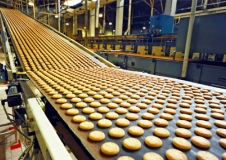Gas Detection in Food and Beverage Industry
Processes within breweries, distilleries and bottling plants require complex processes and the use of potentially flammable and toxic gases. Carbon dioxide plays a vital role in the hospitality industry, pubs, bars, restaurants and fast food outlets rely on tanks or cylinders of CO2 for the carbonation of many beverages, including tap beers, ciders, and post mix soft drink.
However, throughout the industry, there is a general lack of awareness when it comes to carbon dioxide (CO2) and the hazards it can pose for not just workers, but also customers. Generally stored in confined spaces such as cellars or cool rooms, a leaking cylinder can result in a build-up of gases. These gases, if inhaled by humans, can result in asphyxiation and possible death. While initiatives have been taken to reduce the chances of these accidents occurring, they are still not uncommon, and the potential for disaster in many venues is still very real.
The presence of carbon dioxide itself is not necessarily a problem, but its volume in a given environment can rise to dangerous levels. Testing and monitoring of these spaces are crucial to providing a safe working environment and ensuring carbon dioxide remains at safe levels.
How to work safe with Carbon Dioxide
The fact that carbon dioxide is colourless and odourless makes it potentially very dangerous. Since carbon dioxide is heavier than air, it displaces oxygen and at high concentrations will cause asphyxiation. If CO2 leaks in to the air, a person entering a cellar or cool room can be overcome without warning and become ill in only a few minutes.
Since carbon dioxide can’t be detected by the senses, the only way to identify high levels before it’s too late is to use gas detectors. Therefore, one of the key points of AS5034-2005 is the requirement for gas monitors in non-ventilated storage areas. Monitors must indicate CO2 levels, with levels to be kept below 0.5%. The monitor system must also include visual and audible alarms that activate when CO2 levels reach 1.5% and again at 3%. The alarms must both be within the cellar or cool room and at the entry point outside these areas. A wide range of CO2 monitoring systems are available specifically designed for the hospitality industry for compliance with these standards.
It’s easy to overlook the dangers of carbon dioxide in food and beverage applications, however; if there’s potential for high carbon dioxide levels at your site, then you need a carbon dioxide detector. There’s no other reliable way to protect the safety of your workers and customers.
Areas with Hazardous gases:
- Carbonation of Soft Drinks
- Beer & Wine Cellars
- Steam processes
- Inert gases for packaging
- Refrigeration Gases
Documents and References
- AS 5034-2005 (R2016): Installation and use of inert gases for beverage dispensing



